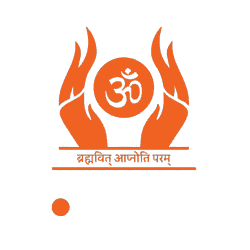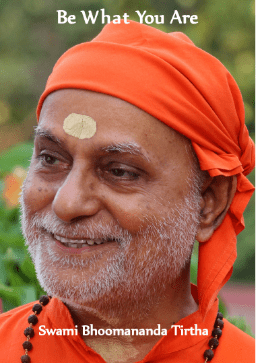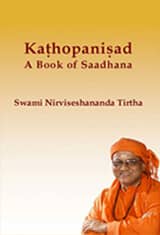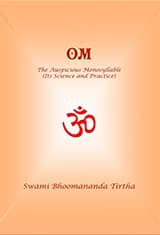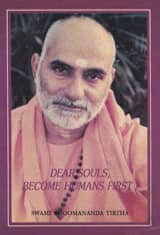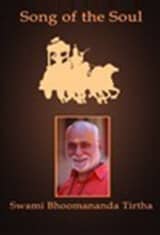Resources
Bhagavad Gita for Personality Transformation
Swami Nirviseshananda Tirtha

Cultivation of samatva means freeing the mind from the clutch of “rāga-dvesha” – affinity and hatred.
What is the one message of Bhagavad Gita, that is of particular importance to youth?
Our scriptures do not at all advocate a fatalistic view of life, as it is often alleged. The purpose of the scriptures is to guide us to elevate, integrate, and fulfill our personality by scientifically and assiduously employing our will and effort. Bhagavad Gita highlights the role of self-effort in verse 6.5 : “Uddharet ātmanātmānam – Elevate yourself by your own effort” .
Right from birth, we are slave to our attraction and repulsion towards worldly objects and situations. Our mind constantly undergoes elation, depression, and agitation, depending on whether the objective situation we face is to our liking or disliking. We are fearful of losing what we like and facing what we dislike.
Bhagavad Gita wants us to transform this slavery into mastery by cultivating the “Yoga” attitude. It defines “Yoga” as evenness (samatva) of the mind towards success and failure, desired and undesired outcomes:
“siddhy-asiddhyoḥ samo bhūtvā samatvaṁ yoga ucyate” (Bhagavad Gita 2.48).
And it says that remaining well seated in this yoga-attitude or samatva-attitude is the key to excellence in all our performances: “yogaḥ karmasu kauśalam” (Bhagavad Gita 2.50).
Cultivation of samatva means freeing the mind from the clutch of “rāga-dvesha” – affinity and hatred. Rāga means colour. Our vision is coloured by our constricted notion of ‘me’ and ‘mine’, and the resulting likes and dislikes, preference and prejudice. Removal of this colour allows us to see the world as it is, and also to see ourselves as we are. The true vision enables us to perform our best in any situation.
How to free the mind from the clutch of rāga-dvesha?
Our focus is always outward, and the inner being is under the control of the external world. The senses are tied to the external objects and objective situations. The mind is driven by the attraction and repulsion of the senses and by its own desires. The intelligence analyzes and decides driven by the desires of the mind. So, the whole personality becomes slave to the objective situation.
Bhagavad Gita says that the way to freedom is to reverse this order of control (verses 3.42 & 43). Tie the intelligence to our inmost true identity – the One universal Soul. Although we may not have a clear understanding of the Soul, its voice is there in everybody as the inner voice, because this is our real identity. Being under the spell of external attraction and repulsion, we don’t heed this voice.
Awareness of this universal identity will free the intelligence from the constrictions of partial and coloured vision. Led by the free intelligence, the mind will be able to overcome its clinging to selfish gains, and relieved of its stress produced by preference and prejudice. Employed by such a free mind the senses will do whatever is ultimately auspicious for oneself as well as the society.
The pursuit of evenness or samatva, although may appear to be only behavioural, is based on the Truth of one undivided Consciousness appearing as the diverse world. Bhagavad Gita says (5.19) that one who is well seated in samatva has won over the entire Creation, and is established in Brahman, the one undivided Reality.
– Published in Speaking Tree

“Tie the intelligence to our inmost true identity – the One universal Soul. Although we may not have a clear understanding of the Soul, its voice is there in everybody as the inner voice, because this is our real identity. ”
“Remaining well seated in this yoga-attitude or samatva-attitude is the key to excellence in all our performances. ”
“Our mind constantly undergoes elation, depression, and agitation, depending on whether the objective situation we face is to our liking or disliking. We are fearful of losing what we like and facing what we dislike. Bhagavad Gita wants us to transform this slavery into mastery by cultivating the “Yoga” attitude. ”
you might be interested in

Swami Bhoomananda Tirtha
03 – Eternal Relevance of Bhagavat Gita | Swami Bhoomananda Tirtha

Swami Bhoomananda Tirtha
065 – Be an Excellent Performer, Enjoyer and Sufferer | Bhagavad Gita | Swami Bhoomananda Tirtha

Swami Bhoomananda Tirtha
What is true renunciation? | Swami Bhoomananda Tirtha

 1151 views
1151 views

 Add to Favorites
Add to Favorites Add to Reading List
Add to Reading List